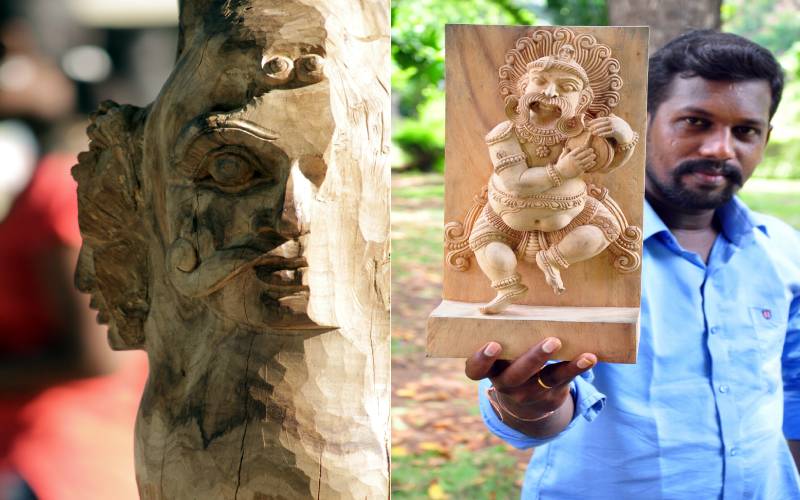
Woodcarver Swaminathan is very proud of his village Arumbavoor (Perambaloor district). This village has been the home to numerous wood craftsman. The craftsmen of Arumbavoor have been working on different types of wood for several centuries. Swaminathan was happy to exhibit his pieces. This included a tiny wooden sculpture of a child and can be enclosed in a palm. Another sculpture is that of a lion. There is a finely carved ball inside the mouth of the lion. Young Swaminathan was at his humble best while showing the sculptures of numerous Hindu deities.
“I come from a traditional family of sculptors who have been working on wood. Our elders had perhaps migrated from Andhra Pradesh several centuries ago. While we speak Telugu at home, Tamil is our language for outside communication. Maasi Periyanna is our Kula dheivam (Family deity). I am happy to share the fact that Arumbavoor in Perambaloor district has been granted the GI (Geographic Indication) tag for sculptures made of wood. My father C. Subramanian was awarded the best sculptor award during 2018 and my uncle N. Durairaj received an award from former President Prathibha Patil. My aunt’s son, C. Natarajan, had received an award from Late Chief Minister, J. Jayalalithaa. Our village was always known for its wooden sculptures. The streets would be reverberating with the noise created by the chisels used by the sculptors.”
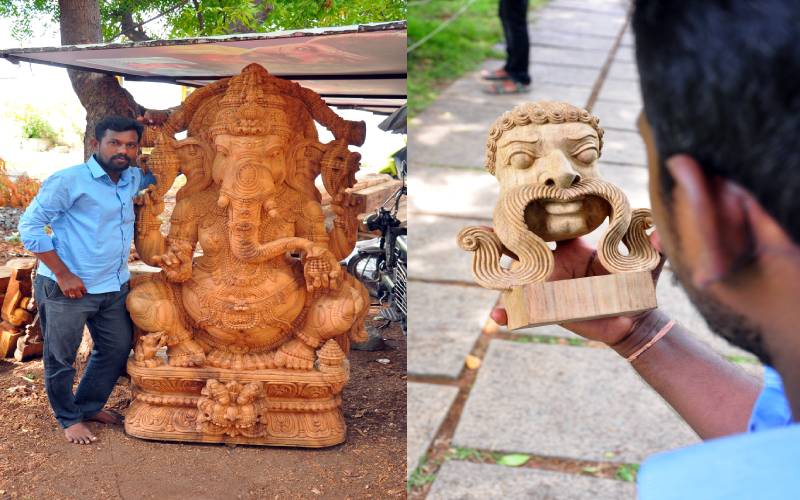
“My Grandfather, Chinnaswamy, was a well-known sculptor. Father found it difficult to make ends meet. Our family had faced enormous economic duress. My Mother Anjalai used to polish pieces sculpted out of wood. Elder Brother Gopinathan, Elder Sister Balambikai and the rest of us used to stay in leaky tile-roofed tenement. My brother gave up studies and used to work with my father. I would help them and also observe what they were up to. My studies could not be continued due to poverty.”
“If I am a woodcarver, it is because of my teachers. My Mentor Dharmalingam was known for his marvelous sculpturers. He could make sculptures of Rathi, Manmatha and pieces connected with dance. My other teacher Muniappan used to treat me like his own son. He was keen to teach and work. My teacher Muniappan’s love for work was fabulous. He did not bother for recognitions and was known for his strict and disciplinarian approach. He would simply throw away poorly finished pieces and would also appreciate the good work of his students. I have been to a number of places along with him. We would finish his piece and polish it. At times, the work would include ornamentation. We would draw during the night hours, and he would correct us. One day, he made me get a piece of wood and drew a picture on it. He nudged me to create a sculpture and I did the same. He was really appreciative of my work,” stated Swaminathan.
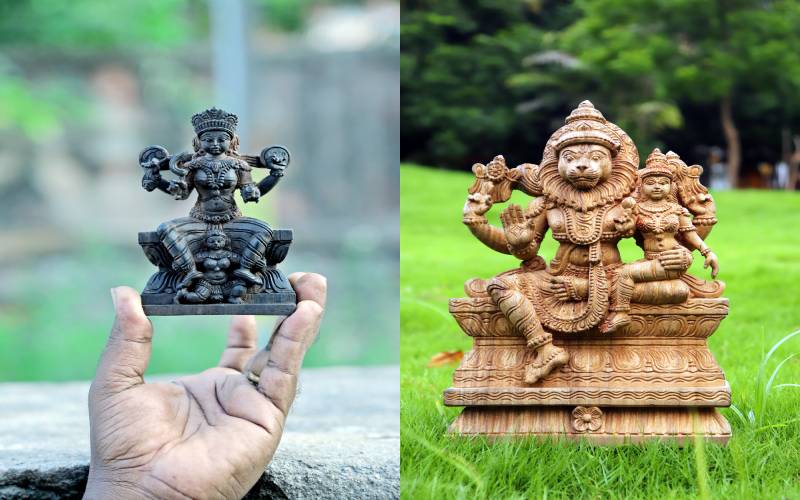
Swaminathan was a resident-student with his Teacher K. Muniappan. He was related to the teacher and if Swaminathan is a noteworthy sculptor today, it is due to the tutelage of the sculptor brothers, K. Muniappan and K. Dharmalingam. They had taken him to Yaazhpanam and he had stayed there for about 10 months in order to work along with them.

The young woodcarver was keen to pursue certified education programs connected with his area of interest. He was told that the school at Mahabalipuram may be expensive, and one would find it difficult to secure an admission. Thereafter, he joined the Bharathiar Palkalaikoodam at Pondicherry. His brother had paid his fees for one year. Swaminathan used to work part-time and pay his fees. He spoke about his days at the school where he underwent education. “I learnt clay-modelling, wax model-making, etc., in our school. It was possible to assimilate realistic, modern, and western approaches. My teachers appreciated my talent and helped me. It was at this time that I participated in a contest organized by the State-owned Poompuhar. The contest was between 10 am and 2 pm. My piece known as Annakumari (A woman with the head of a swan) won the first prize. It was more a bass-relief kind of work and the prize helped me to raise in life.”
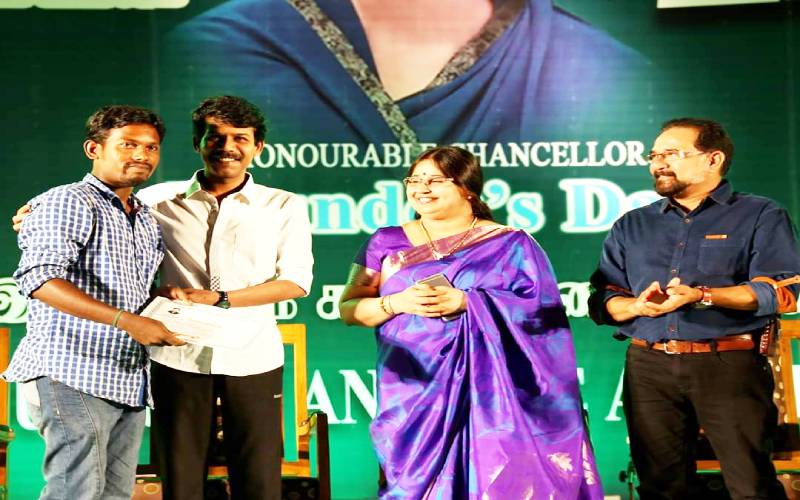
“I was awarded a prize by the Coimbatore-based Kasthuri Sreenivasan Trust, and this pushed me up in my professional ladder. My sculptures became my ambassadors. I received several awards, and the newspapers wrote about me and my work. The Seated Shiva got me the best sculptor prize for Perambaloor district. The Lakshmi made by me got me a state award and I had the privilege of receiving the same from the Minister Ma Foi K. Pandiarajan. I was also honored by Viswakarma Veda Niruvanam,” added Swaminathan.
The woodcarver has made several miniatures. His Teacher Muniappan has once made miniatures of all the types of desi cows, and this had motivated Swaminathan to make numerous miniatures. He began by making a less than 4 cm wooden sculpture of a sage and this won him a lot of recognition. It used to involve hard work and time, but financial rewards were hard to come by. He suggested that the social media platforms like Facebook have been very helpful to share his creations. Swaminathan spoke about proportions, techniques and training programs. He had once trained a number of students from the Coimbatore-based P. S. G. College of Arts and Science. He was also happy to talk about the GI tag received by his village.
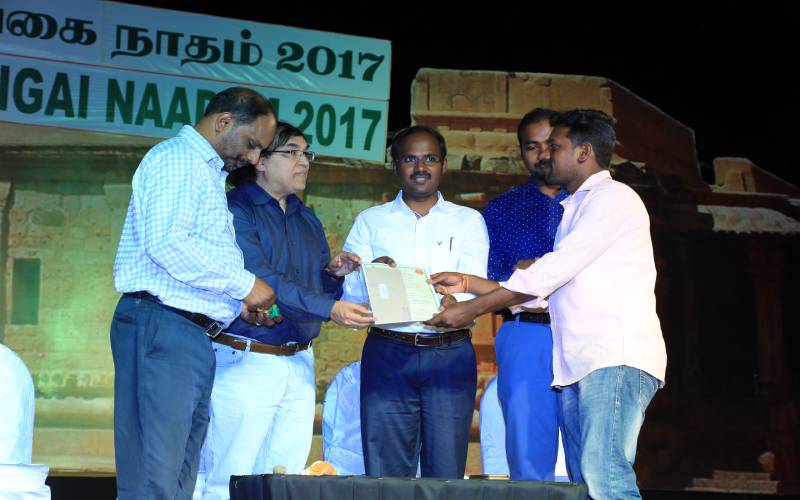
Several places in Tamil Nadu had received GI tags – Thanjavur plate, Nachiayaar Kovil lamps, Kancheepuram sarees, Kovilpatti kadalai mittai etc. The woodcarvers of Arumbavoor approached the government in 2013 and was awarded the GI tag recently. Swaminathan spoke about the techniques that were picked from his teachers. “It is important to draw the figure on the piece of wood. The face has to be finished properly and the body has to be proportional. One has to be aware of the steps required for it is important to ensure quality. There are several rules connected with different kinds of figures and the guidance of experienced teachers is very important.”
“My teacher used to divide the face into three parts. The first part would begin form the top of the head and stop at the forehead. While the second part would begin at the forehead and end at the bottom of the nose. The rest of the face belong to the third part. The level of the forehead and the upper will have to be the same. This will ensure that the piece is delivered well. A Standing Devi would have many parts. The face would be one part, crown one and half parts, neck quarter part, the portion between the neck and the breast will be second part. Breast to the navel will be the third part. From the bottom of the navel to the hip will be the fourth part. The thighs would be the fifth part. The kneecap would be the sixth part. The seventh part would be the portion below the kneecap. The lowest portion would be a one-fourth of the parts. Thus, the sculpture of a Devi in a standing posture would consist of 8.75 parts,” affirmed Swaminathan.
The woodcarver spoke about the kind of trees used for producing sculptures. Most of the sculptures were made with the Vaagai tree and therefore the tree came to be known as Silai Vaagai (Silai means idol). One had to study the grains and veins of the cut tree before proceeding with the work. Pieces made out of rosewood and teak are very expensive. Mavilangai, Poovarasu and Atthimaram are normally used for processional mounds. Swaminathan spoke about the choice of wood, and it is normally based on the size and requirement. Karungaali (Ebony) is normally used for the pooja-room. Temple cars are made out of the Ilupai tree. One had to work with Ilupai even while it is wet. It would become difficult to work on if time lapses by. The complete cars known as ratham-s is normally made of teak wood while the temple doors are made of Vengai woods. Jackfruit and mango tree wood is also used for the making of temple cars. The shastras are clear about the wood that needs to be used for specific sculptures.
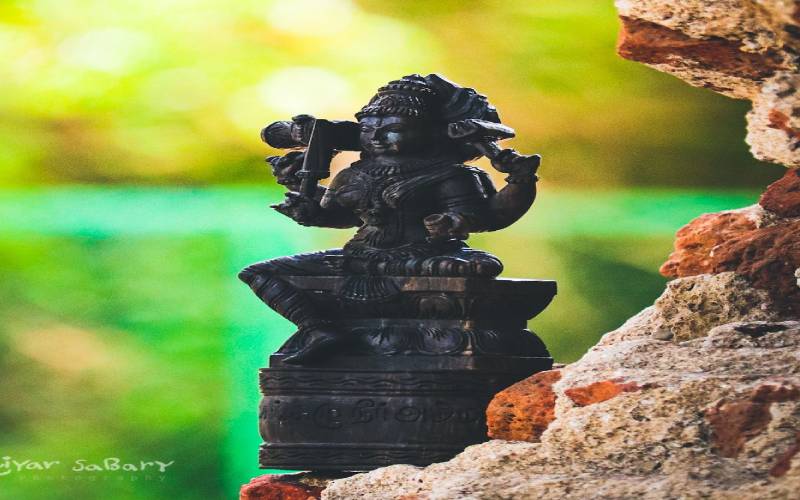
Swaminathan was grateful while speaking about the souls who made him. I am grateful to my parents, teachers, my brother Gopinathan, uncle Selva Pandian and my friends. Professor Thirugnyaanam helped me with the books and award-winning craftsman Kalaimamani, Padma Shri Munnuswamy gave me a lot of inputs. My wife Suriya has been extremely supportive of my work. I am keen to make a number of miniatures and also teach people. The desire is to make sculptures of Ramana Maharshi, Aurobindo, Vivekananda, freedom fighters and people who have worked for the upliftment of the society. There is a desire to make at least one interesting sculpture per year and make it part of my collection. I am keen to make sculptures which would create awareness in the society. My sculptures will include concepts connected with literature, mythology, and history. The mobile phone and the social media platforms are extremely useful. It has become possible to interact with craftsmen across regions. Technology is helping me to harvest the benefits of my skills and I earnestly hope to harvest my best,” smiled Swaminathan.
The fount of energy displayed by Swaminathan is sure to take him a long way.
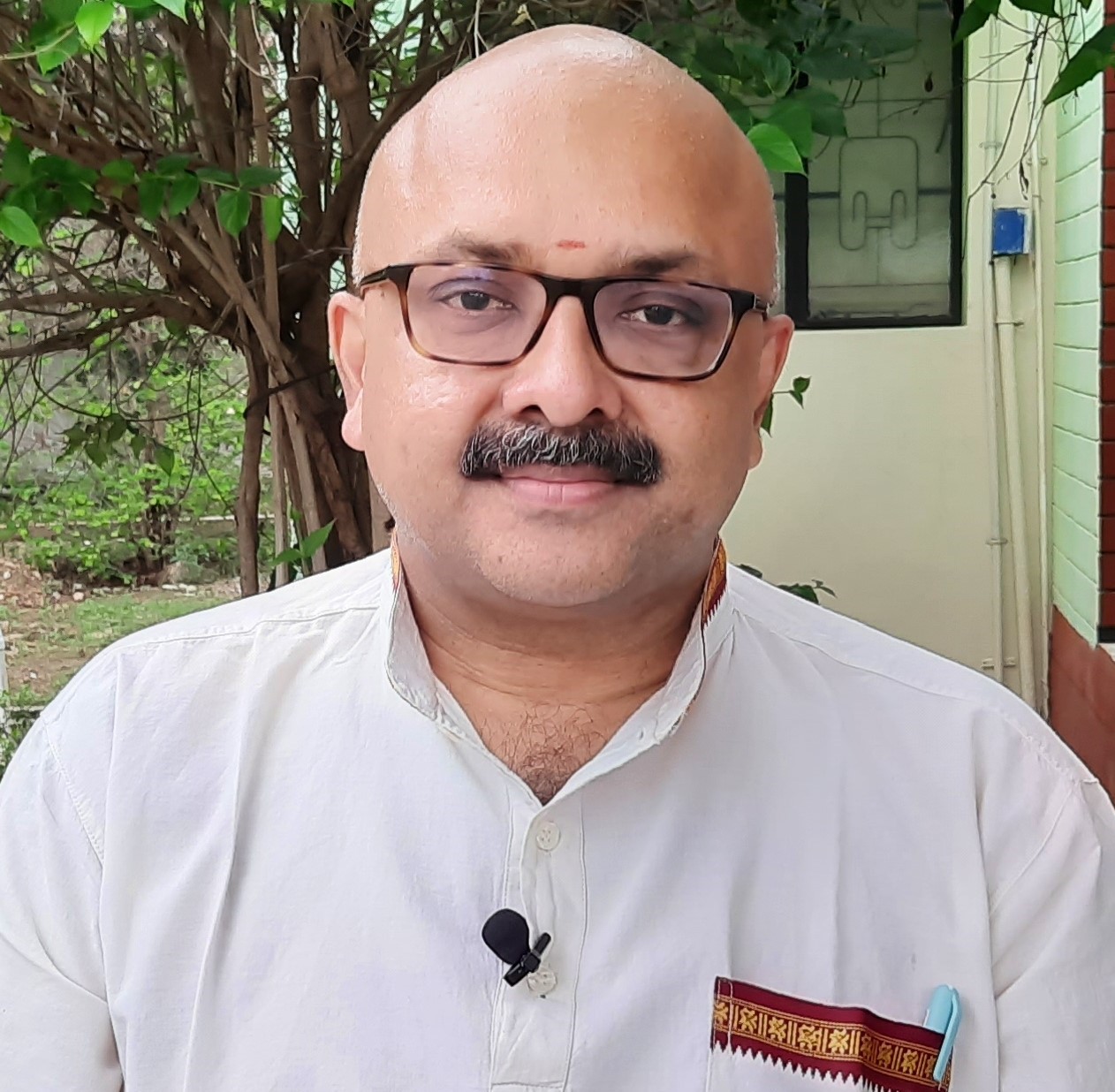
Mr. Rajesh Govindarajulu is one of the founding members of the Verandah Club Pvt. Ltd. He is a leading columnist, historian, jeweler, entrepreneur, and a heritage enthusiast who is earnestly working to revive the past in the light of the present. Experiential learning about the history of Coimbatore is his main course of interest and he is also a panel member of many colleges in the city.
NEXT ARTICLE